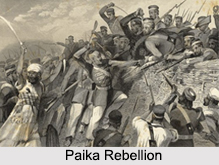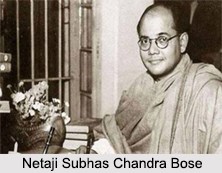 Modern History of Odisha was framed by the colonial powers which came to India in the later Mughal period. Then it came under the Portuguese governors and later British took the powers in Odisha, Bengal and Bihar from Nawab of Bengal.
Modern History of Odisha was framed by the colonial powers which came to India in the later Mughal period. Then it came under the Portuguese governors and later British took the powers in Odisha, Bengal and Bihar from Nawab of Bengal.
Arrival of Portuguese in Odisha
The Portuguese were the first Europeans to build factories in Odisha. They had a settlement in Pipili in Balasore district. The British had established a settlement in Hariharpur with the permission of the Mughal administrator, as early as 1633 to trade cotton goods. But it could not maintain for long because of the harsh climate, and Portuguese and Aracanese pirates.
Diwani of Bengal and Odisha
In 1765, after the 8 years of Battle of Plassey, Lord Clive acquired the "Diwani of Bengal, Bihar and Odisha from titular Mughal emperor, Shah Alam II. But, only the Midnapore district was meant by Odisha, as rest of it had passed on to the Marathas. Lord Clive had tried to negotiate the acquisition of Odisha from the Marathas. His successor, Warren Hastings, had also tried negotiating with the Marathas.
Attack of British East India Company in Odisha
A Colonel Harcourt of the British Army sailed from Northern Circars on 3rd August 1803 and landed on 25th August. He marched from Ganjam now Ganjam District of modern Odisha with 5000 men on 8th September, to flush the Marathas out of the region. On 18th September, Harcourt took control of Puri. On 21st September, a second force had landed at Balasore, now the Balasore District and after taking control of the region, it sent reinforcements to Cuttack to help with the siege of Barabati Fort. On 14th October, the fort of Barbati was stormed and captured.
Marathas and British
 On 17th December 1803, Raghoji II Bhonsle of Nagpur signed the Treaty of Deogaon (also Deogarh) in Odisha with the British after the Battle of Laswari and gave up the province of Cuttack (which included Mughalbandi, the coastal part of Odisha, Garhjat the princely states of Western Odisha, Balasore port, parts of Midnapore district of West Bengal).
On 17th December 1803, Raghoji II Bhonsle of Nagpur signed the Treaty of Deogaon (also Deogarh) in Odisha with the British after the Battle of Laswari and gave up the province of Cuttack (which included Mughalbandi, the coastal part of Odisha, Garhjat the princely states of Western Odisha, Balasore port, parts of Midnapore district of West Bengal).
Paika Rebellion in Odisha
Jaya Krushna Rajguru Mahapatra, known to the people as Jayee Rajguru, the royal preceptor to Mukunda Dev II (who was a minor) mobilized an army of Paika warriors and raised a revolt against the British in 1804. This is the first uprising against the British rule in Odisha. The British East India Company, ultimately with the help of some treacherous natives ruthlessly suppressed the rebellion. Both Jayee Rajguru and the Raja were made prisoners. Later Jayee Rajguru was convicted and on 6th December 1806 hanged heinously by his legs tied to two different branches of Banyan tree and released to tear him to two parts at Midnapore. The Raja was released in 1807 since Jayee Rajguru had taken the entire responsibility of the uprising on him. Thus Jayee Rajguru is said to be the first martyr of the early freedom struggle against British rule in Odisha. His sacrifice, however, did not go in vain. It laid the foundation of a major revolt 13 years after his martyrdom. In 1817, the British had to suppress the Paika rebellion. The Paika were a landed militia who were exempted from taxes in lieu of their services. They were dissatisfied with the new British land laws and were led by Bakshi Jagabandhu, a commander of the king of Khurda. Surendra Sai from Sambalpur region had started a rebellion against the British in 1827. During the Indian Rebellion of 1857, the princes of Odisha did not join the wars.
Odisha Famine
In 1866, Odisha was struck with a great famine, called Na Anka Durvikhya (literally the nine number famines) locally. The death toll has been estimated to be about one million spread across different regions. During the famine, Babu Bichitrananda Das and Gouri Shankar Roy decided to publish a magazine in Odia. The first issue of Utakala Deepika appeared on 4th August 1866 from the newly Cuttack Printing Press. It dealt with issue of famine. Though Christian missionaries had established a printing press in Cuttack in 1838, this was the first independent publication in Odia.
Contribution of Newspaper in Odisha
In 1903, the Utkal Union Conference was founded. In 1911, Odisha and Bihar were separated from Bengal province to form a new single province. In 1912, Odisha Tenancy Act was introduced in the Bihar-Orissa Legislative Assembly. The previous Bengal Tenancy Act of 1885 was considered ill-suited for the conditions of the region. On 12th September 1913, the Orissa Tenancy Act was passed, securing better rights and treatment for "ryots" in the region. In 1913, Sashibhusan Rath began publishing the first Odia daily newspaper, Asha, from Berhampur. Gopabandhu Das was the editor and wrote its editorials until 1919. In 1915, Gopabandhu Das began publishing a magazine called Satyabadi, to promote Odia literature and culture. On 4th October 1919, he started his own weekly newspaper, Samaja.
Contribution of Bagha Jatin
In 1914, the revolutionary Bagha Jatin moved to a hideout in Kaptipada village in Mayurbhanj District. On 9th September 1915, Bagha Jatin and his companions were discovered by the British Government and it resulted in a 75 minutes gunfight. On 10th September 1915, Jatindranath Mukherjee (Bagha Jatin) died of bullet wounds at the Balasore hospital.



















